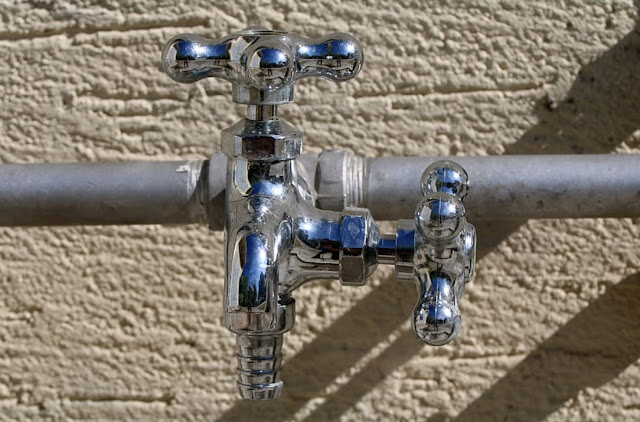Replacing Galvanized Pipes with PVC
Replacing Galvanized Pipes with PVC: A Cost-Effective Solution for Better Plumbing
Galvanized pipes are famous for plumbing systems due to their strength and durability. However, as time passes, these pipes are prone to corrosion, leading to numerous issues such as rusty water, reduced water flow, and potential health hazards.
One of the most effective solutions to overcome these drawbacks is replacing galvanized pipes with PVC (Polyvinyl Chloride) pipes. This article will explore the benefits of such a replacement, the step-by-step process, common mistakes to avoid, and essential maintenance tips for PVC pipes.
Understanding Galvanized Pipes
Galvanized pipes are steel pipes coated with a layer of zinc to prevent rusting and corrosion. This zinc coating gives them added strength, making them suitable for various applications. They were widely used in plumbing systems due to their affordability and resilience.
The Drawbacks of Galvanized Pipes
While galvanized pipes were once a reliable choice, they have drawbacks that have become apparent over time. The zinc coating wears away, exposing the underlying steel to moisture and leading to rust and corrosion inside the pipes. As a result, the water quality deteriorates, and the flow of water gets restricted due to the buildup of rust and mineral deposits.
Benefits of Replacing Galvanized Pipes with PVC
Corrosion Resistance
One of the primary advantages of PVC pipes is their exceptional corrosion resistance. Unlike galvanized pipes, PVC pipes do not rust or corrode, ensuring clean and safe water flow for an extended period.
Improved Water Quality
With galvanized pipes, rust and mineral deposits can contaminate the water supply, affecting its taste and quality. By switching to PVC pipes, you can significantly improve the water quality in your home, providing you and your family with healthier water.
Longevity and Durability
PVC pipes have a longer lifespan compared to galvanized pipes. They are not affected by rust or corrosion, making them a durable and reliable choice for plumbing systems.
Cost-Effectiveness
While the upfront cost of PVC pipes may be slightly higher than galvanized pipes, their long-term benefits far outweigh the initial investment. The reduced need for repairs and replacements makes PVC pipes a cost-effective solution in the long run.
Preparing for Replacement
Before embarking on the replacement process, several essential steps need to be taken.
Inspection and Assessment
Start by inspecting your current plumbing system to identify the extent of galvanized pipe usage and their condition. Determine which sections require replacement and plan accordingly.
Material Selection
Carefully choose the appropriate PVC pipes and fittings for your plumbing system. Ensure they meet the required specifications and are suitable for the intended application.
Hiring a Professional Plumber
Replacing galvanized pipes with PVC involves intricate plumbing work. It's best to hire a professional plumber with experience in such replacements to ensure a smooth and successful transition.
Step-by-Step Guide to Replacing Galvanized Pipes with PVC
Turn Off Water Supply
Begin by shutting off the main water supply to avoid any water flow during the replacement process.
Drain the Pipes
Open all the faucets in your home to drain any remaining water from the galvanized pipes.
Remove the Galvanized Pipes
Carefully detach the galvanized pipes from the fittings using appropriate tools. Be cautious not to damage the surrounding plumbing system during this process.
Prepare PVC Pipes
Measure and cut the PVC pipes to the required length, ensuring precision and accuracy. Smooth the cut edges using sandpaper to facilitate proper fittings.
Install the PVC Pipes
Fit the prepared PVC pipes into the existing fittings securely. Use PVC cement to create a strong and leak-proof connection.
Testing and Inspection
Once the installation is complete, turn on the water supply and thoroughly check for any leaks or issues. Address any problems promptly.
Common Mistakes to Avoid
Incorrect Measurements
Accurate measurements are crucial for a successful replacement. Avoid rushing the measurement process to prevent ill-fitting pipes and potential leaks.
Using Incorrect Tools
Always use the right tools for cutting, fitting, and securing PVC pipes. Using improper tools can damage the pipes and compromise the entire plumbing system.
Ignoring Proper Insulation
Insulate the PVC pipes adequately, especially in areas exposed to extreme temperatures. This step prevents freezing during winter and minimizes the risk of pipe damage.
Maintenance Tips for PVC Pipes
Regular Inspections
Periodically inspect your PVC plumbing system for signs of damage, leaks, or wear. Address any issues promptly to avoid major problems later.
Clearing Clogs
If you encounter any clogs, use non-abrasive methods to clear them, such as using a plunger or a plumber's snake. Avoid using harsh chemicals that could damage the pipes.
Protecting from UV Exposure
If you have outdoor PVC pipes, consider painting them with a UV-resistant coating to protect them from sun damage and prolong their lifespan.
Conclusion
Replacing galvanized pipes with PVC is a wise decision to overcome the shortcomings of outdated plumbing systems. PVC pipes offer corrosion resistance, improved water quality, longevity, and cost-effectiveness.
Following the step-by-step guide and avoiding common mistakes can ensure a successful and long-lasting replacement process. Regular maintenance will further prolong the lifespan of your PVC pipes, providing you with a reliable plumbing system for years to come.
